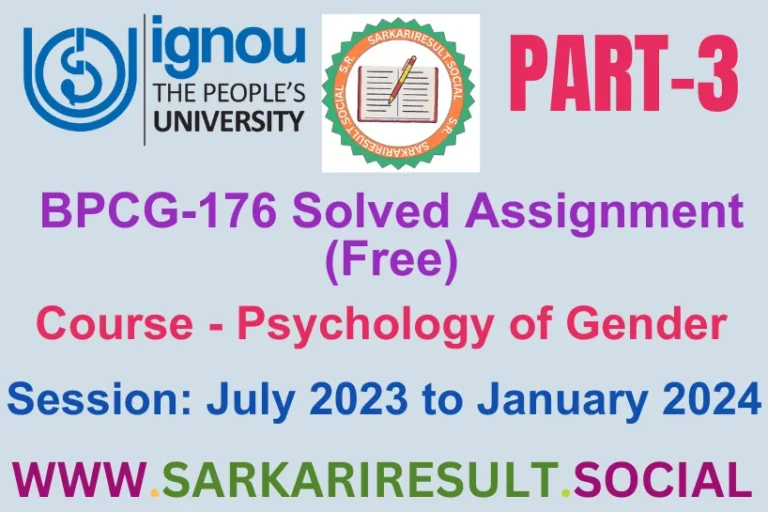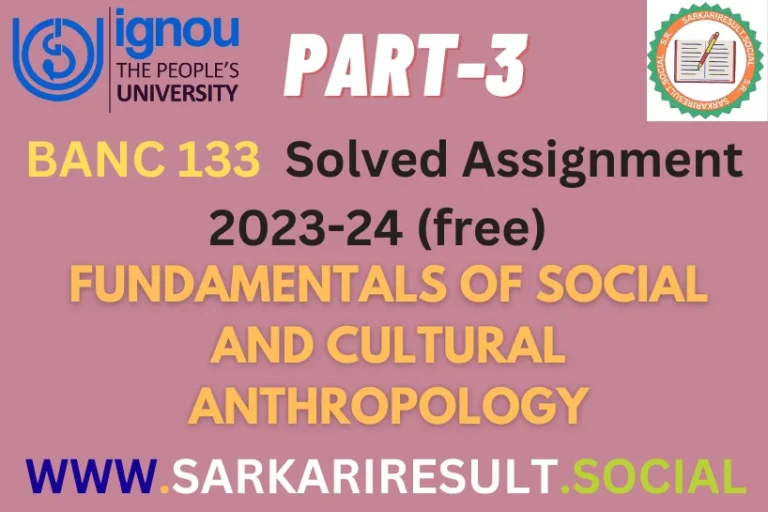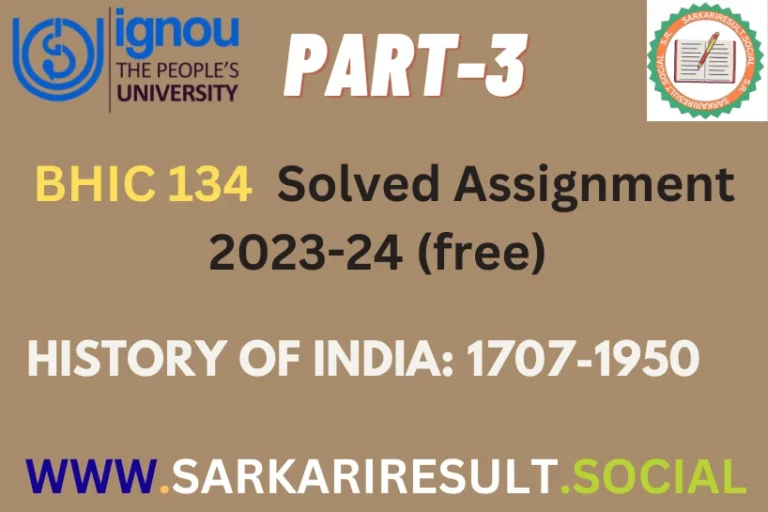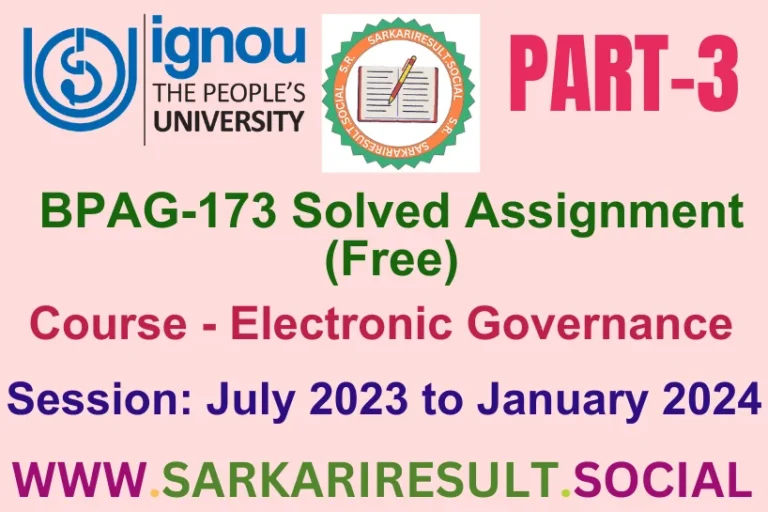BHIC 132 IGNOU Solved Assignment 2023-24 (free) Part -1

BHIC 132 IGNOU Solved Assignment 2023-24 (free) Part -1
Enhance your academic journey with BHIC 132 IGNOU Solved Assignment 2023-24 (free) Part -1, featuring two questions, each with a 500-word limit. Our meticulously crafted solutions ensure a comprehensive understanding while maintaining formal academic standards. Dive deep into historical inquiries, meet word limits, and elevate your historical insights. Access BHIC-132 IGNOU Assignment 1 solutions to excel in your studies today!

1) Discuss the achievements of samudragupta on the basis of Prayagraj inscription.
Ans. Samudragupta, a powerful ruler of the Gupta Empire in ancient India, left an indelible mark on history through his military conquests, administrative reforms, and cultural patronage. The Prayagraj inscription, engraved on the Ashokan pillar at Prayagraj (modern-day Allahabad), provides invaluable insights into Samudragupta’s achievements, particularly his military prowess, administrative policies, and patronage of art and culture.
Also Read This: BHIC 131 IGNOU Solved Assignment 2023-24 (free) Part -1
Military Achievements:
1. Conquests and Expansion: The Prayagraj inscription glorifies Samudragupta’s military campaigns, describing his conquests across vast territories. It records his victories over numerous rulers and kingdoms, expanding the Gupta Empire’s boundaries significantly.
2. Subjugation of Rivals: Samudragupta’s military campaigns aimed to unify the Indian subcontinent. He defeated rulers from various regions, including Bengal, southern India, present-day Odisha, and parts of Central and Western India, showcasing his military might and strategic acumen.
Also Read This: BHIC 131 IGNOU Solved Assignment 2023-24 (free) Part -2
3. Policy of Conquest and Benevolence: The inscription highlights Samudragupta’s policy of Dharmic conquest, emphasizing his military successes without oppression or destruction. He followed a policy of Dharma, respecting the conquered territories’ local customs, religions, and traditions, which contributed to the empire’s stability and unity.
Administrative Reforms:
1. Policy of Dharma: Samudragupta’s governance was influenced by the concept of Dharma. His administration was based on principles of justice, fairness, and compassion, aiming to ensure the welfare of his subjects irrespective of their religious or social backgrounds.
Also Read This: BHIC 131 IGNOU Solved Assignment 2023-24 (free) Part -3
2. Efficient Administration: The inscription suggests that Samudragupta maintained an effective administrative system, fostering economic prosperity and social stability within the empire. His policies likely contributed to the Gupta Empire’s golden age of art, literature, and scientific advancements.
Cultural Patronage:
Also Read This: Check BGDG 172 IGNOU solved assignment 2023-24 (Free)
1. Support for Arts and Learning: Samudragupta was a patron of arts and culture, fostering an environment conducive to intellectual and artistic endeavors. His court attracted scholars, poets, and artists, contributing to a flourishing cultural renaissance.
2. Encouragement of Scholars: The Gupta ruler’s patronage encouraged the proliferation of Sanskrit literature and learning. Notable scholars like Harishena, the author of the Prayagraj inscription, were part of his court, contributing significantly to the intellectual landscape of the time.
Also Read This: Check BSOG 173 IGNOU solved assignment 2023-24 (Free)
3. Promotion of Religion: Samudragupta’s reign saw the harmonious coexistence and patronage of various religions. The Gupta ruler’s support for Hinduism and Buddhism facilitated the construction of temples, monasteries, and other religious establishments.
In conclusion, the Prayagraj inscription provides a glimpse into Samudragupta’s multifaceted achievements, portraying him as a military strategist, an efficient administrator, and a patron of art and culture. His reign marked an era of unprecedented territorial expansion, administrative efficiency, and cultural efflorescence, contributing to the Gupta Empire’s zenith as a center of learning, prosperity, and cultural vibrancy in ancient India.
Also Read This: Check top Begae 182 IGNOU solved assignment 2023-24 (Free)
2) Discuss the nature of conflicts amongst the powers of South India. What role did the minor kings play in it?
Ans. The history of South India was characterized by a complex web of conflicts and power struggles among various dynasties and regional powers, creating a landscape of ever-shifting alliances and rivalries. The nature of conflicts in South India was multifaceted, often revolving around territorial control, resource competition, political ambitions, and disputes over hegemony.
Nature of Conflicts:
1. Territorial Disputes: Numerous kingdoms vied for control over fertile regions, trade routes, and strategic locations. Battles frequently erupted over the possession of key territories, such as the fertile river valleys or port cities.
Also Read This: Discover BPAG 174 ignou solved Assignment (Free) 2023-24
2. Dynastic Rivalries: Conflicts often stemmed from dynastic rivalries among powerful kingdoms. Competing royal families sought to expand their influence and dominance, resulting in prolonged power struggles and military confrontations.
3. Resource Competition: Control over resources like land, forests, minerals, and water sources fueled conflicts. Access to these resources was crucial for sustaining the economy and military power of these kingdoms.
4. Struggle for Supremacy: Ambitious rulers aspired to establish regional supremacy, leading to clashes between dominant powers aiming to assert their authority over smaller states.
Role of Minor Kings:
Also Read This: BANC-131 IGNOU Solved Assignment 2023-24 (free) Part 1
1. Alliances and Diplomacy: Minor kings often played a significant role by forming alliances with larger kingdoms for protection or to further their own interests. Aligning with stronger powers offered them security and opportunities for growth.
2. Proxy Wars and Support: In conflicts between major powers, minor kings sometimes served as allies or proxies, providing troops, resources, or strategic support to more powerful factions in exchange for favors or protection.
3. Opportunistic Strategies: Some minor kings strategically exploited conflicts between larger powers to expand their own territories or to assert greater autonomy, taking advantage of the chaos to strengthen their positions.
4. Instability and Shifting Allegiances: The involvement of minor kings sometimes led to instability as their loyalties could shift based on changing circumstances or advantageous opportunities, adding complexity to regional politics.
Also Read This: BANC-131 IGNOU Solved Assignment 2023-24 (free) Part 2
Impact:
1. Fragmentation: Continuous conflicts led to a fragmented political landscape in South India with numerous small kingdoms constantly vying for power, which hindered the emergence of a unified and stable regional authority.
2. Cultural and Artistic Flourishing: Despite conflicts, South India witnessed cultural and artistic advancements. Some rulers patronized art, architecture, literature, and religious institutions, contributing to the region’s rich cultural heritage.
3. Intermixing of Cultures: The interactions between various kingdoms facilitated cultural exchanges, trade, and the spread of languages, religions, and traditions across the region.
Also Read This: BANC-131 IGNOU Solved Assignment 2023-24 (free) Part 3
In conclusion, conflicts among the powers of South India were driven by a complex interplay of territorial ambitions, dynastic rivalries, resource competition, and the pursuit of hegemony. Minor kings played a pivotal role in these conflicts, aligning with larger powers, exploiting opportunities, and sometimes reshaping the regional power dynamics. This tumultuous era of conflicts, despite its disruptive nature, also contributed to cultural exchanges and the flourishing of art and literature in South India.







